
Meteors… You know… Those things that killed the dinosaurs and threatened our planet and very existence in many hollywood films (Such as the 1979 film titled simply “Meteor”). They don’t just threaten our planet though, they threaten every planet in our solar system and beyond! Our culture is very familiar with these things and with all the films and recently the “eyes on the sky” for incoming objects to earth they are on our minds now more than ever. Rightly so, because as you know…
Meteoroids Are Awesome.
Giant space rocks like Meteoroids, not to be confused with Metroids (Are you trying to get us sued?), are incredibly common out there in space. Down here on earth though, we don’t get to see many of them unless you are lucky on a random late night looking at the sky – or have a dashcam in Russia. So to learn a little more, we turn to our buddy Wikipedia.
A Meteoroid is a small particle from a comet or asteroid. A meteoroid is significantly smaller than an asteroid, ranging from small grains to 1 meter wide.
The visible streak of light from space debris is the result of heat as it enters a planet’s atmosphere, and the trail of glowing particles that it sheds in its wake is called a meteor, or colloquially a “shooting star” or “falling star”. A series of many meteors appearing seconds or minutes apart, and appearing to originate from the same fixed point in the sky, are called a meteor shower. The root word meteor comes from the Greek meteōros, meaning “suspended in the air”. Objects larger than several meters can explode in the air and create damage. If a meteoroid, comet or asteroid withstands ablation from its atmospheric entry and impacts with the ground, then it is called a meteorite.
Around 15,000 tonnes of meteoroids, micrometeoroids and different forms of space dust enter Earth’s atmosphere each year.
Could We Stop An Asteroid? Feat. Bill Nye
The odds of the earth getting hit by an asteroid is like winning a lottery, but it has happened, and it will happen again! Fun fact: We actually get hit with 100 tons of meteorites per day here on earth – yes you read that right… 100 TONS… that is a lot of stuff trying to kill us every 24 hours (Thanks Obama.. uh.. I mean Universe.). The average size of these meteorites are about the size of a blueberry or a pebble – so much smaller than the big boys that caused these huge meteor craters below.
These are in no particular order, because they are all awesome, in my opinion :D.
Vredefort Crater
The Vredefort crater is the largest verified impact crater on Earth, at more than 300 km across it is freaking huge. The asteroid that hit Vredefort is estimated to have been one of the largest ever to strike Earth (at least since the Hadean eon which was some four billion years ago), thought to have been approximately 5–10 km (3.1–6.2 mi) in diameter. It was located in the present-day Free State Province of South Africa and named after the town of Vredefort, which is situated near its centre. While the crater itself has long since eroded away, the remaining geological structures at its centre are known as the Vredefort Dome or Vredefort impact structure. The crater’s age is estimated to be 2.023 billion years (± 4 million years), which places it in the Paleoproterozoic era, also making it the second oldest known crater on Earth. Fascinating!
Sudbury Basin
The Sudbury Basin, also known as Sudbury Structure or the Sudbury Nickel Irruptive, is a major geologic structure in Ontario, Canada. It is the second-largest known impact crater or astrobleme on Earth (The largest being the Vredefort crater, that we just mentioned above), as well as one of the oldest. The full extent of the Sudbury Basin is 62 km (39 mi) long, 30 km (19 mi) wide and 15 km (9.3 mi) deep, although the modern ground surface is much shallower.
The basin is located on the Canadian Shield in the city of Greater Sudbury, Ontario. The former municipalities of Rayside-Balfour and Valley East lie within the Sudbury Basin, which is referred to locally as “The Valley”. The urban core of the former city of Sudbury lies on the southern outskirts of the basin.
The Sudbury basin was formed as an impact from a bolide approximately 10–15 km (6.2–9.3 mi) in diameter that hit the earth 1.849 billion years ago in the Paleoproterozoic era. Debris from the impact was scattered over an area of 1,600,000 km2 (620,000 sq mi) and traveled over 800 km (500 mi) away — rock fragments ejected by the impact have been found as far as Minnesota! Geology, you are amazing.
Chicxulub Crater
This is the big one, the Dinosaur Killer! The Chicxulub crater is a prehistoric impact crater buried underneath the Yucatán Peninsula in Mexico. Its center is located near the town of Chicxulub, which makes sense, it is named after the place after all. The age of the Chicxulub asteroid impact and the Cretaceous–Paleogene boundary (K–Pg boundary) coincide precisely, leading to the conclusion that the asteroid impact that left this crater resulted in the extinction of the non-avian dinosaurs on Earth. The age of the rocks shows that this impact structure dates from the end of the Cretaceous Period, roughly 66 million years ago. The crater is more than 180 km (110 mi) in diameter, making it one of the largest confirmed impact structures on Earth; the impacting bolide (meteoroid) that formed the crater was at least 10 km (6 mi) in diameter and delivered an estimated energy equivalent of 100 teratons of TNT (4.2×1023 J). By contrast, the most powerful man-made explosive device ever detonated, the Tsar Bomba, had a yield of only 57 megatons of TNT (2.4×1017 J), making the Chicxulub impact 2 million times more powerful.
The crater was discovered by Antonio Camargo and Glen Penfield, geophysicists who had been working in the Yucatán while looking for petroleum during the late 1970s. Within the data, Penfield found a huge underwater arc with “extraordinary symmetry” in a ring 70 km (40 mi) across. Penfield was initially unable to obtain evidence that the unique geological structure was in fact a crater, and gave up his search. Through contact with Alan Hildebrand, Penfield was able to obtain samples that suggested it was an impact feature. Evidence for the impact origin of the crater includes shocked quartz, a gravity anomaly, and tektites in surrounding areas.
Meteor Crater (Barringer Crater)
The aptly named Meteor Crater is a meteorite impact crater approximately 43 miles (69 km) east of Flagstaff, near Winslow in the northern Arizona desert of the United States. The crater was created about 50,000 years ago during the Pleistocene epoch when the local climate on the Colorado Plateau was much cooler and damper. The object that created the crater was a nickel–iron meteorite about 50 metres (55 yards) across, which struck the plain at a speed of several kilometers per second. Impact energy has been estimated at about 10 megatons. Because the United States Board on Geographic Names commonly recognizes names of natural features derived from the nearest post office, the feature acquired the name of “Meteor Crater” from the nearby post office named Meteor. The site was formerly known as the Canyon Diablo Crater, and fragments of the meteorite are officially called the Canyon Diablo Meteorite. Scientists refer to the crater as Barringer Crater in honor of Daniel Barringer, who was first to suggest that it was produced by meteorite impact. The crater is privately owned by the Barringer family through their Barringer Crater Company, which proclaims it to be “best preserved meteorite crater on Earth”. Despite its importance as a geological site, the crater is not protected as a national monument, a status that would require federal ownership. It was designated a National Natural Landmark in November 1967. Looks like a fun place to visit – they even have a a 1,406 pound meteorite found in the area on display! Sounds like a road trip is in order!
Meteor Crater lies at an elevation of about 1,740 m (5,709 ft) above sea level. It is about 1,200 m (4,000 ft) in diameter, some 170 m deep (570 ft), and is surrounded by a rim that rises 45 m (150 ft) above the surrounding plains. The center of the crater is filled with 210–240 m (700–800 ft) of rubble lying above crater bedrock. One of the interesting features of the crater is its squared-off outline, believed to be caused by pre-existing regional jointing (cracks) in the strata at the impact site.
Kara Crater
Kara is a meteor crater in Nenetsia, Russia. It is 65 km in diameter and the age is estimated to be 70.3 ± 2.2 million years old (Upper Cretaceous). Impactite outcrops located on the Baydarata Gulf shore north-east of the crater imply that the original size of the crater, now greatly eroded, was 120 km in diameter, making it the 4th largest on earth!
The Kara crater lies in the southeastern end of the Yugorsky Peninsula, while the Ust-Kara site lies offshore, 15 km east of the small Kara or Karskaya Guba inlet. It was formerly believed that these two sites were two separate craters and that they formed a twin impact structure from a large-scale meteorite hit in the late Cretaceous. However, it seems that the Ust-Kara site does not exist as a separate site. Apparently, the Suevite outcrops of the Ust-Kara impact structure are only a part of the Kara impact structure. (Hodge 1994 and NASA 1988)
Shoemaker Crater
The Shoemaker Crater (formerly known as Teague Ring) is a deeply eroded remnant impact structure (or astrobleme) of a former impact crater, situated in arid central Western Australia. It is about 100 km (62 mi) north-northeast of Wiluna. It is named in honour of planetary geologist Eugene Shoemaker. The prominent ring-like topographic feature, easily seen in satellite images, lies on the boundary between the Palaeoproterozoic Earaheedy Basin and the Archaean Yilgarn Craton.
It was first suggested that the ring-like topographic feature may be an impact structure in 1974. Subsequent research revealed definitive evidence for this hypothesis, including the presence of shatter cones and shocked quartz. The feature has a central circular region of uplifted Archaean Granite (Teague Granite) about 12 km (7.5 mi) in diameter, surrounded by a downwarped ring (ring syncline) of sedimentary rocks with an outer limit of disturbance at about 30 km (19 mi) diameter, which is a minimum estimate of the size of the original crater.
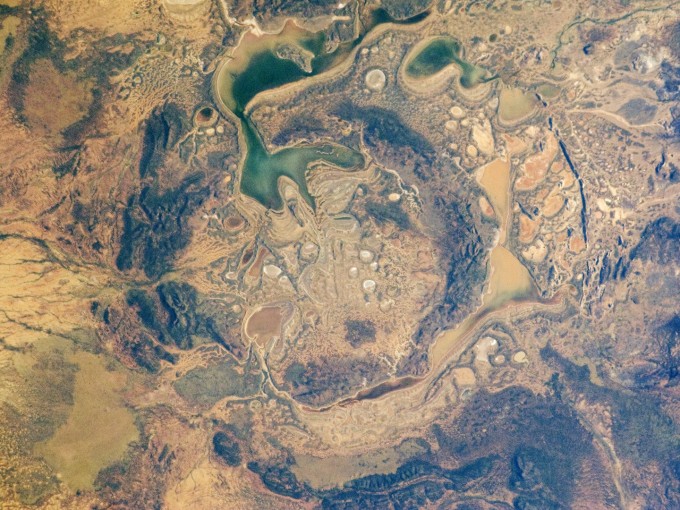
Peering down onto an ancient Australian impact
Manicouagan Crater
The Manicouagan Crater is one of the oldest known impact craters still visible on the surface of Earth at roughly 213-215 million years old! It is located primarily in Manicouagan Regional County Municipality in the Côte-Nord region of Québec, Canada, about 300 km (190 mi) north of the city of Baie-Comeau. Its northernmost part is located in Caniapiscau Regional County Municipality. The Crater is thought to have been caused by the impact of a 5 km (3 mi) diameter asteroid about 215.5 million years ago (Triassic Period). It was once thought to be associated with the end-Carnian extinction event.
This crater is a multiple-ring structure about 100 km (60 mi) across, with its 70 km (40 mi) diameter inner ring its most prominent feature; it contains a 70 km (40 mi) diameter annular lake, the Manicouagan Reservoir, surrounding an inner island plateau, René-Levasseur Island. It is the earth’s sixth largest confirmed impact crater according to rim-to-rim diameter!
Popigai Crater
The Popigai crater (or astrobleme) in Siberia, Russia is currently tied with Manicouagan Crater as the seventh largest verified impact crater on Earth. A large bolide impact created the 100 kilometres (62 mi) diameter crater 35.7 ± 0.2 (2σ) million years ago during the late Eocene (Priabonian stage). The crater is 300 km east from the outpost of Khatanga and 880 km (550 mi) NE of the city of Norilsk. It is designated by UNESCO as a Geopark, a site of special geological heritage. Popigai is the best example yet of the formation of a crater of this type. Six other craters are larger; some are either buried (Chicxulub), strongly deformed (Sudbury), or deformed and severely eroded (Vredefort). There is a small possibility that Popigai impact crater formed simultaneous with the approximately 35 million year old Chesapeake Bay and Toms Canyon impact craters.
For decades paleontologists and geologists were fascinated by the Popigai crater, but unfortunately the entire area was completely off limits due to the diamonds and the mines constructed by gulag prisoners under Stalin; however, a major investigatory expedition was undertaken in 1997 (IPEX 1997) which greatly advanced understanding of the enigmatic structure. The impactor in this event has been identified as either an 8 km (5.0 mi) diameter chondrite asteroid, or a 5 km (3.1 mi) diameter stony asteroid. The shock pressures from the impact instantaneously transformed graphite in the ground into diamonds within a 13.6 km (8.5 mi) radius of the impact point. Diamonds are usually 0.5 to 2 mm (0.020 to 0.079 in) in diameter; a few exceptional specimens are 10 mm (0.39 in) in size. The diamonds not only inherit the tabular shape of the original graphite grains but they additionally preserve the original crystal’s delicate striations! Ladies, perhaps Asteroids are a girls best friend? 🙂
Chesapeake Bay Impact Crater
If this were to happen today, I would surely be obliterated as I live relatively close to that area lol. No one suspected the existence of a large impact crater buried beneath the lower part of the Chesapeake Bay and its surrounding peninsulas, until 1983. The first hint was a 20 cm (8 in)-thick layer of ejecta that turned up in a drilling core taken off Atlantic City, New Jersey, far to the north. The layer contained the fused glass beads called tektites and shocked quartz grains that are unmistakable signs of a bolide impact with the earth. In 1993, data from oil exploration revealed the extent of the crater.
The Chesapeake Bay impact crater was formed by a bolide that impacted the eastern shore of North America about 35 million years ago, in the late Eocene epoch. It is one of the best-preserved “wet-target” or marine impact craters, and the largest known impact crater in the United States! Continued slumping of sediments over the rubble of the crater has helped shape the Chesapeake Bay area. So think about that, next time you visit that area!
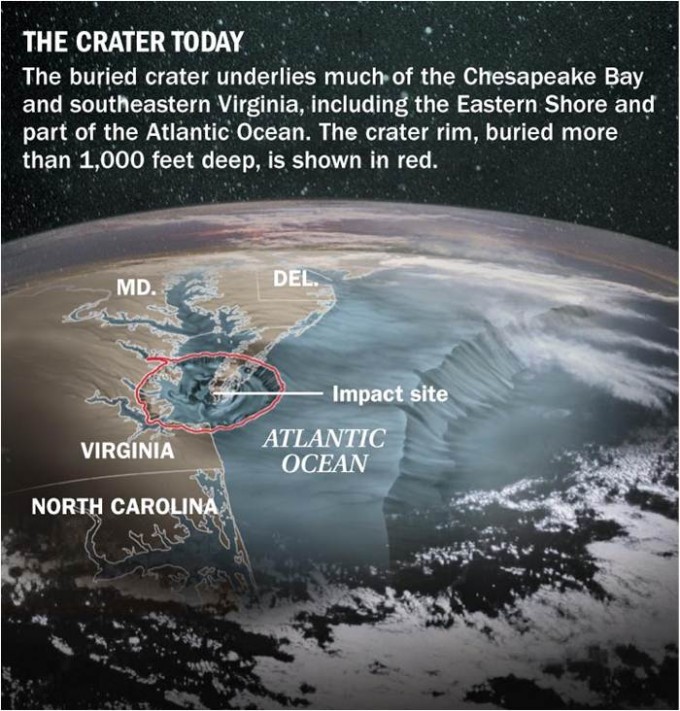
What if a Meteorite Struck the United States?
South Pole–Aitken Basin
That is enough of the Earth! Let’s get off this planet and look at the craters in our solar system! The South Pole–Aitken basin is a huge impact crater on the far side of Earth’s Moon (Cleverly named “The Moon” lol). Roughly 2,500 kilometres (1,600 mi) in diameter and 13 kilometres (8.1 mi) deep, it is one of the largest known impact craters in the entire Solar System! It is the largest, oldest and deepest basin recognized on the Moon. This moon basin was named for two features on opposing sides; the crater Aitken on the northern end and the southern lunar pole at the other end. The outer rim of this basin can be seen from Earth as a huge chain of mountains located on the lunar southern limb, sometimes called “Leibnitz mountains”, although this name has not been considered official by the International Astronomical Union – we will use it for now, anyway.
Valhalla
Valhalla, besides having one of the coolest names ever, is the largest multi-ring impact crater on Jupiter’s moon Callisto and in the Solar System. It is named after Valhalla, Odin’s hall in Norse mythology. So cool.
Valhalla consists of a bright central region 360 km across, an inner ridge and trough zone and striking concentric rings extending up to about 1,900 km from the center. Several large impact craters and catenae are superimposed on Valhalla. Valhalla’s multi-ring system is of impact origin and may have been formed by semi-liquid or liquid material underlying the brittle lithosphere which was punctured by the impactor and slumped towards the center of the crater following the impact. Geology is cool on earth, but its even cooler on another planet.
Caloris Basin
The Caloris Basin, also called Caloris Planitia, is a large impact crater on Mercury about 1,550 km (960 mi) in diameter, another one of the largest impact basins in the solar system. Caloris is Latin for heat and the basin is so-named because the Sun is almost directly overhead every second time Mercury passes perihelion. The crater was discovered in 1974 and it is surrounded by a ring of mountains approximately 2 km (1.2 mi) tall.
Hellas Planitia
The Hellas Planitia, also known as the Hellas Impact Basin, is a huge, roughly circular impact basin located in the southern hemisphere of the planet Mars. It is the second or third largest impact crater and the largest visible impact crater known in the Solar System. The basin floor is about 7,152 m (23,465 ft) deep, 3,000 m (9,800 ft) deeper than the moon’s South Pole-Aitken basin, and extends about 2,300 km (1,400 mi) east to west! Curiosity, go there right meow!
Turgis
Turgis is the largest known crater on Saturn’s moon Iapetus. It is 580 km in diameter, 40% of the moon’s diameter and one of the larger craters in the Solar System! Could you imagine if 40% of the Earths diameter was a crater? That would be insane! It is named after a Saracen baron, Turgis of Turtelose (Tortosa). It is located in Cassini Regio at 16.9°N 28.4°WCoordinates: 16.9°N 28.4°W. The rim has a scarp about 15 km high that generated a landslide. It is overlain by Malun, the 13th-largest crater on Iapetus.
Odysseus
Odysseus is the largest crater on Saturn’s moon Tethys. It is 445 km across, more than 2/5 of the moon’s diameter, and is one of the larger craters in the Solar System. It is situated in the western part of leading hemisphere of the moon—the latitude and longitude of its center are 32.8°N and 128.9°W, respectively. It was discovered by Voyager 2 spacecraft on 1 September 1981 during its flyby of Saturn (LOVE VOYAGER.). It was named after the Greek hero Odysseus from Homer’s Odyssey and Iliad.
Mare Imbrium
Recently, On March 17, 2013, an object about the size of a small boulder hit the lunar surface in Mare Imbrium and exploded in a flash of apparent magnitude 4. The crater could be as wide as 20 meters. This was the brightest impact recorded since NASA’s lunar impact team began monitoring in 2005! Exciting stuff!
The Mare Imbrium (Latin for “Sea of Showers” or “Sea of Rains”), is a vast lunar mare filling a basin on Earth’s Moon. It is one of the larger craters in our Solar System, Mare Imbrium was created when lava flooded the giant crater formed when a very large object hit the Moon long ago. Estimates of its age range from 3 billion to 4.5 billion years. The Moon’s maria (plural of mare) have fewer features than other areas of the Moon because molten lava pooled in the craters and formed a relatively smooth surface. Mare Imbrium is not as flat as it was originally thought to be because later events have altered its surface.
The Mare Imbrium is visible to the naked eye from Earth. You have most likely seen it before, and if not it is probably familiar to a lot of people because it was featured in the traditional ‘Man in the Moon’ image seen on the Moon in Western folklore, Mare Imbrium forms the man’s right eye.
In 1971 the crewed Apollo 15 mission left the Fallen Astronaut sculpture on the Mare Imbrium, which commemorates astronauts and cosmonauts who have died in the advancement of space exploration.
Need even more meteor crater goodness? Check out these awesome resources!
Impact Craters on Venus, Earth, and Other Planets
List of Impact Craters on Earth
Largest Craters in the Solar System
Isn’t The Universe Fantastic?! Which Crater Blew Your Mind? Do you have a favorite meteor crater that you find fascinating that we didn’t mention? Share with the class and let us know in the comments below! Keep Exploring And Thanks For Reading!
You like this? Don’t forget to follow us on twitter @infinigeek and like us on facebook @infinigeek! We are also on that Google Plus thing.

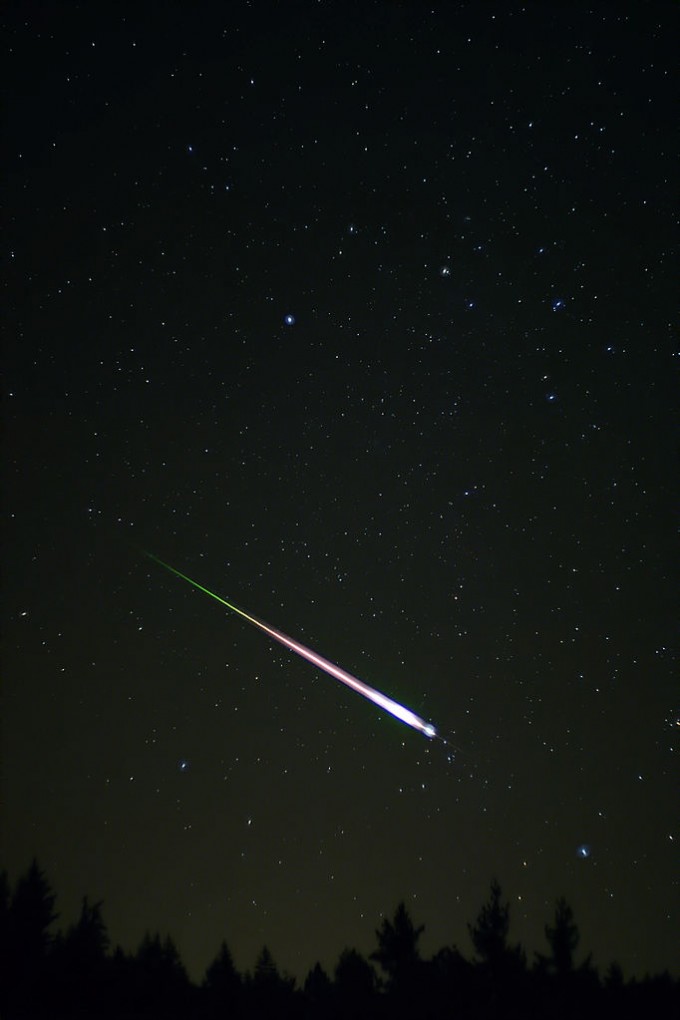
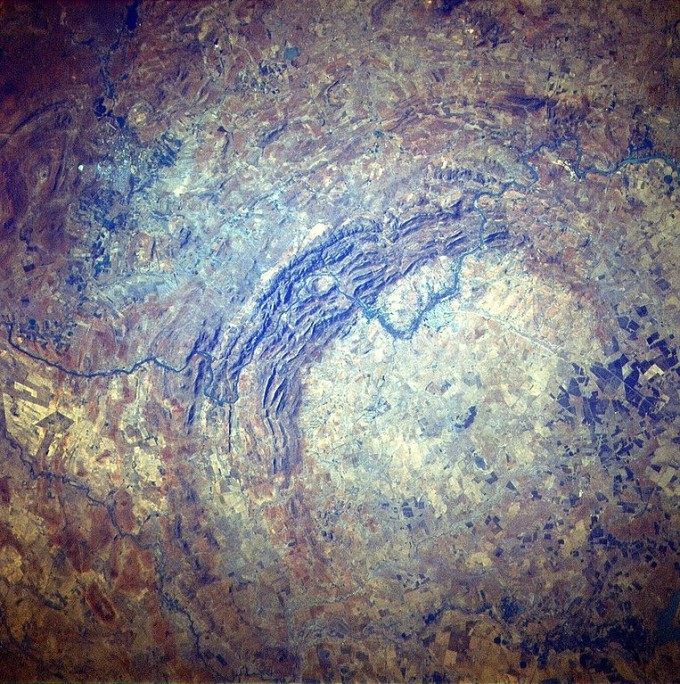
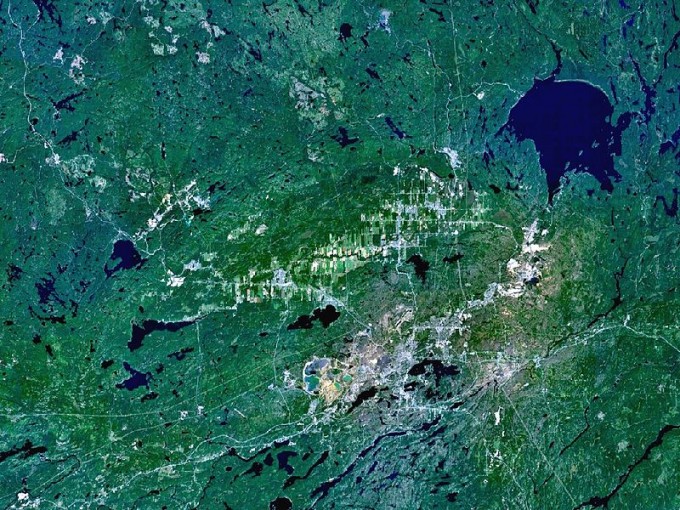
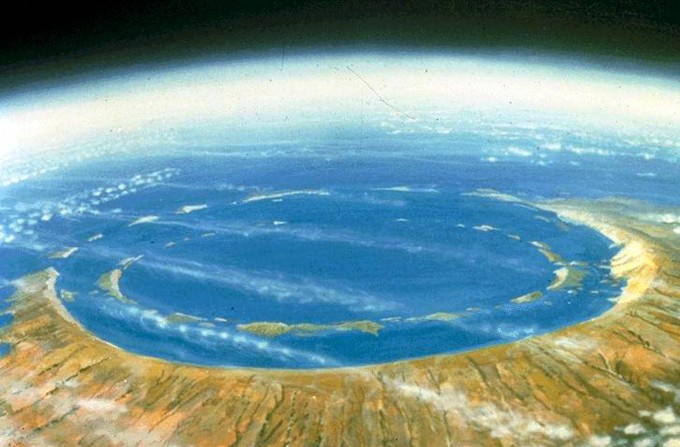


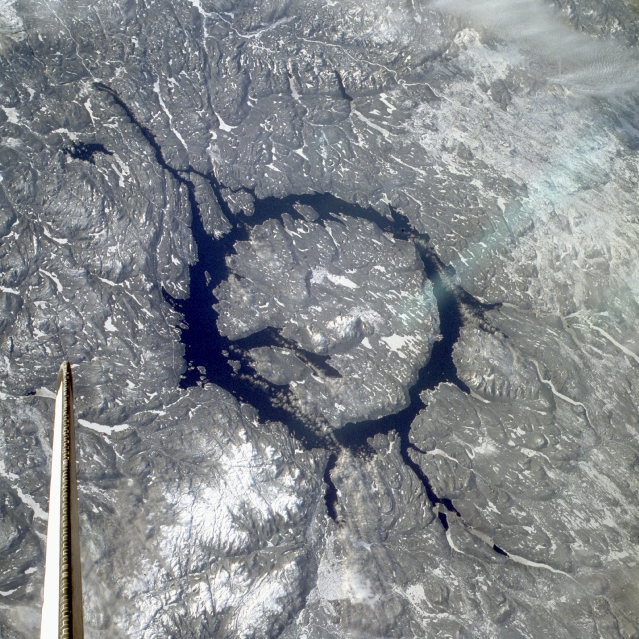
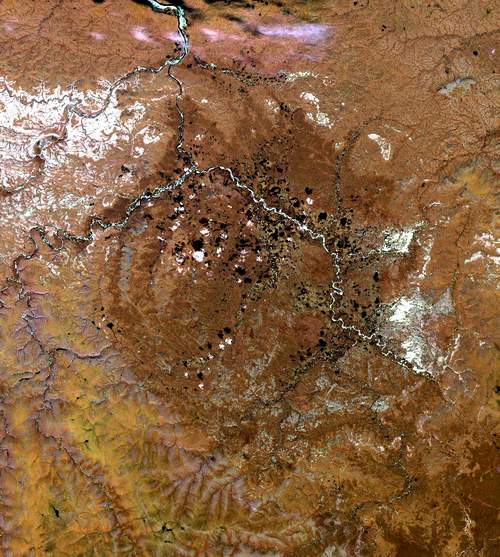
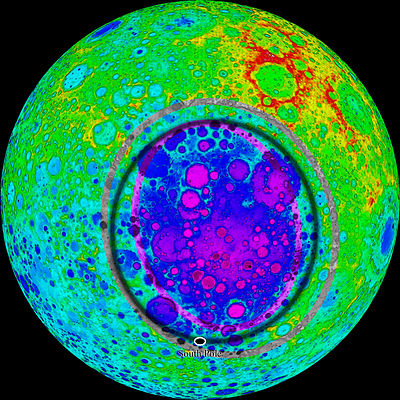
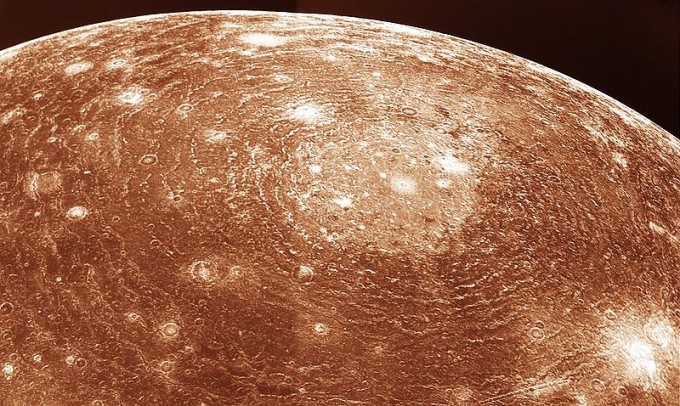
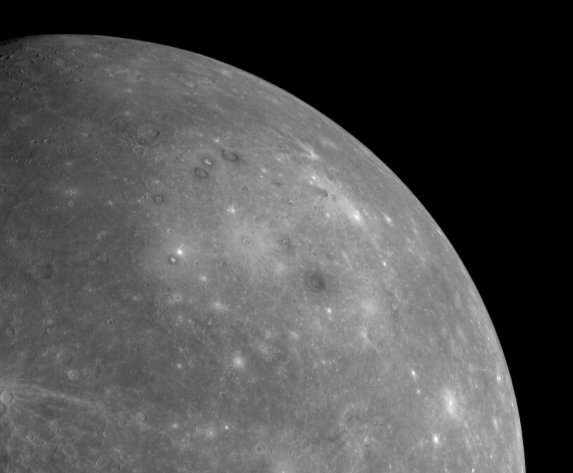
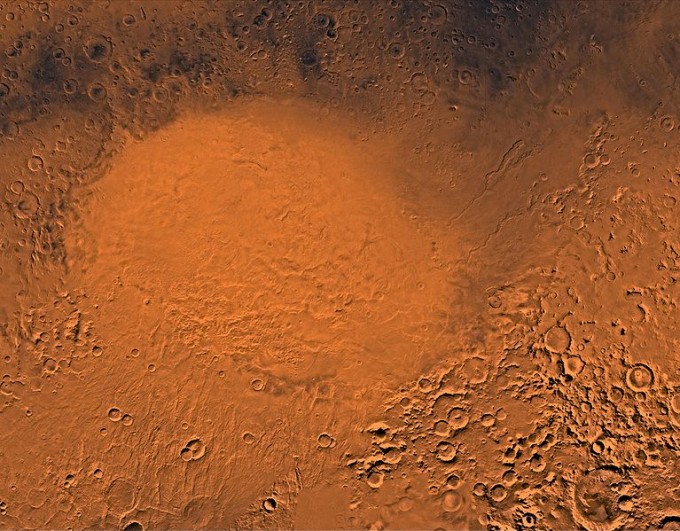
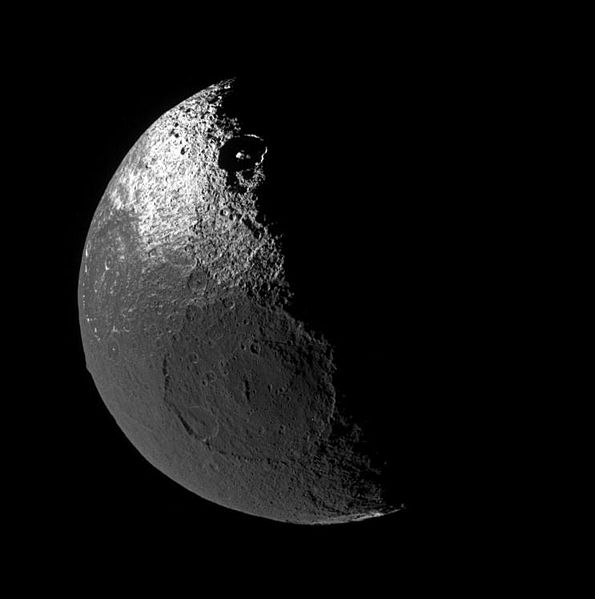
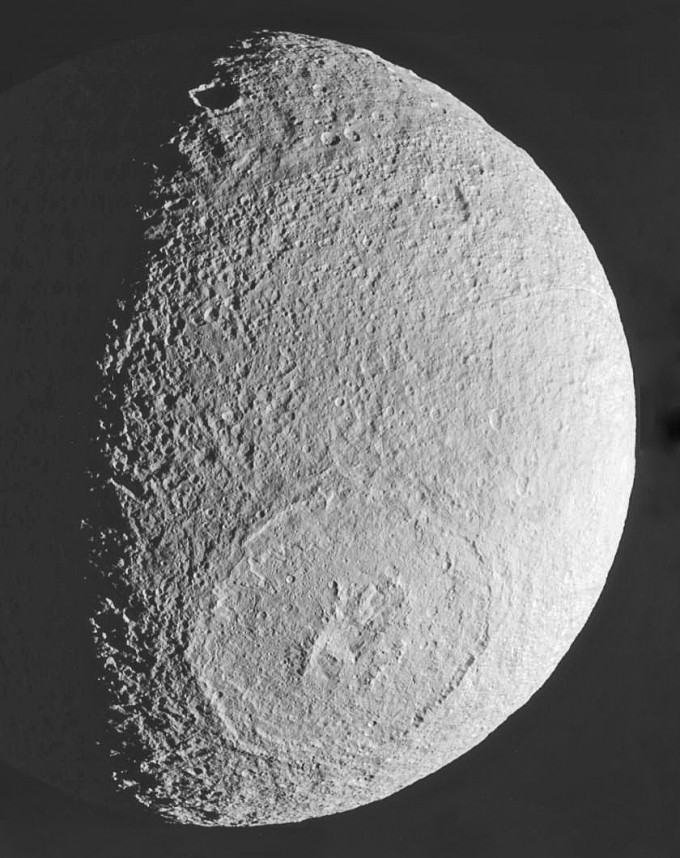
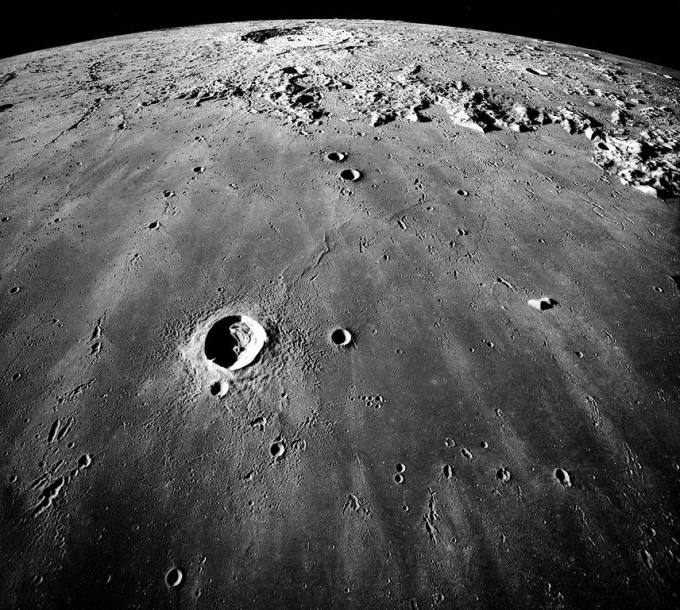
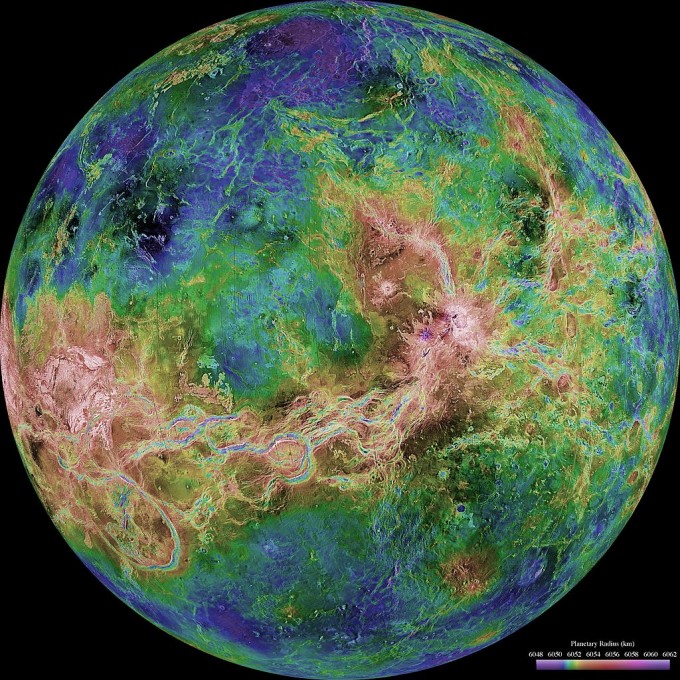

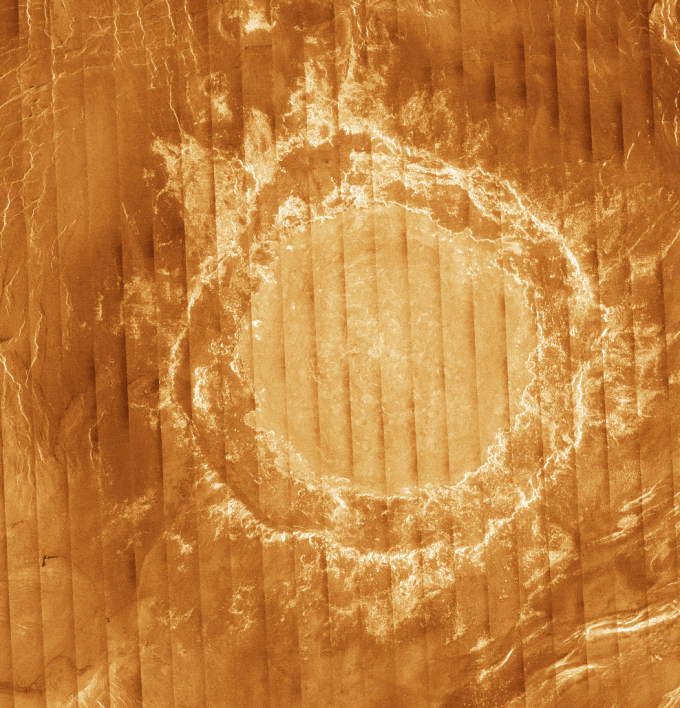




Recent findings suggest a meteor from a serial impact off the dust tail of Comet C/1811 F1 was the initial mechanism to cause the New Madrid earthquakes of 1811-1812. A serial impact which also produced The Carolina Bays: “1811 A Comet and A Quake”, wix, documents and links, “A Few Comments on 1811”. “Travels to the Equinoctial Regions of America”, Chapter 14, by Alexander von Humboldt has excellent accounts of the effects caused by the close passing of a Sungraer comet.
Pangaea break-up mechanism was not convection but a Lunar impact to create The Mediterranean Sea: http://scienceforums.com/topic/27514-mediterranean-appalachian-pangaea-impact-crater/
Two of the world’s largest astroblemes.
Find the truths behind the myths…